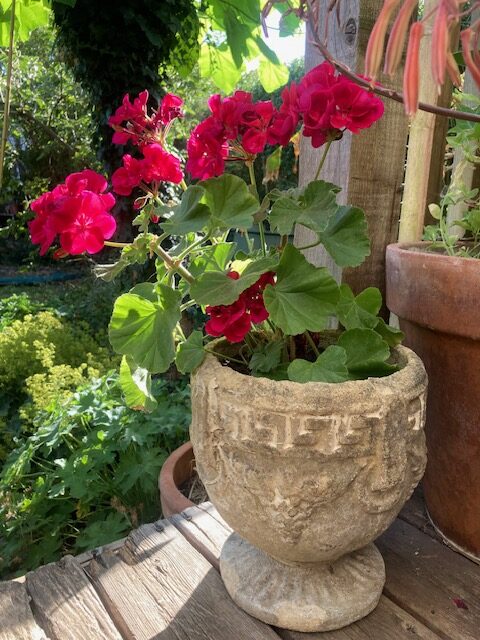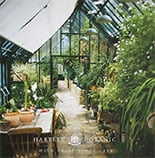Tucked into the corner of my cold greenhouse last winter, my pelargoniums looked at best unassuming, at worst half dead. But the greenhouse actually gave them exactly what they needed, keeping them alive for this precise moment in the year, for high summer, when they burst into glorious flower.
I have always loved pelargoniums (often mistakenly called geraniums). To me, they are plants for sunny kitchen back doorsteps, among jumbles of seedlings and houseplants outside for the summer – exactly the kind of gardening I love – but they suit all sorts of gardening styles: picture a row of smart pots filled with post-box red pelargoniums on a black and white checkerboard-tiled balcony, or a blousy pub hanging basket, spilling over with lobelia and petunia but crowned by a flowering pelargonium, or a Mediterranean style patio, all white walls, wall pots and tumbling ivy-leaved pelargoniums. In summer, there are few gardens that a pelargonium could not slip effortlessly into.

There are several different types, but I particularly love two of them, the bog-standard bedding pelargoniums, and the scented pelargoniums. They are two ends of the spectrum. Bedding pelargoniums are all about that splash of colour. They are not the most refined perhaps (though still utterly charming – I won’t really have a word said against them) but they are straightforward about what they bring to the table. Scented pelargoniums are slippery fishes in comparison. Many of them are not all that much to look at – the flowers are small and pale, even the leaves are nothing fancy – but rub those leaves and bring your fingers to your nose and delicious scents are released: lemon, orange, mint, cinnamon, rose, even coca cola. In the kitchen, scented pelargoniums offer a whisper of flavour: a few rose-scented leaves layered into a Victoria sponge or steeped in syrup can elevate even the simplest recipe. And so there is always room for them on my summer patio, and in my winter greenhouse.
Growing tips
In summer they are simple to grow. They do need a well-drained root zone, which generally means growing in containers, so that you have control over moisture levels. This is great news as they look best in pots anyway. Mix peat-free multi-purpose compost perhaps with a little grit or gravel mixed in for drainage, and then don’t over water them. Give them a little feed once a week to keep the flowers coming. Scented types need an even more well-drained soil and are more intolerant of over watering. It can be a good idea to take cuttings of all of your pelargoniums in late summer, as I have found that they overwinter better as smaller plants, plus you will give yourself some back up plants in case of losses.
In winter pelargoniums are a little trickier, needing that sweet spot between cool and frost free. As autumn deepens, don’t let them become casualties of the first frost. Trim back spent blooms and straggly stems, remove any soggy leaves, and transfer your favourites to the cold greenhouse. Kept just above freezing and barely watered, they’ll sit quietly through winter. Above all their roots need to be dry, and so the cool greenhouse is perfect unless it gets really cold, in which case they may need a little extra protection: you can throw horticultural fleece or a sheet over them during hard frosts, or even bring them indoors temporarily, moving them back out when the weather grows milder. Don’t expect them to look great at first, but once the weather starts to warm you can bring them back to themselves with a trickle of water, a fresh topping of compost, and a little occasional feed, and they will soon be looking worthy of any summer patio or garden.










